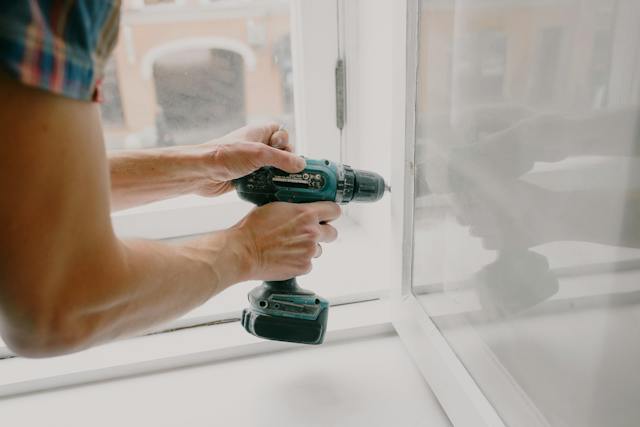Rental agreements may differ between properties, but they share a fundamental structure.
Essential terms must be included to ensure clarity, legality, and protection for both landlords and residents.
Landlords must also ensure the agreement complies with state laws and local regulations to protect their rights and meet legal obligations, helping to keep renters happy and maintain a positive rental experience.
Here are the key elements you must include in your rental agreement. Keep reading to learn more!
Names of All Residents
The rental agreement should list the names of all residents who will occupy the property, ensuring that everyone is bound by the contract's terms. Each resident must sign the agreement, agreeing to pay rent on time and maintain the property.
Including all residents' names and signatures provides the landlord with stronger protection. If one resident moves out or defaults, the landlord can hold the remaining residents accountable for the full terms of the agreement, even if someone leaves without notice.
Limits to Occupancy
The rental agreement should clearly state that only the residents listed on the contract are authorized to occupy the property. This helps prevent issues with unauthorized residents who haven’t gone through the proper screening process.
Limiting the number of residents also prevents overcrowding, reducing wear and tear on the property and minimizing safety risks, such as during a fire.
Specifying these restrictions in the agreement protects landlords from potential legal liabilities related to unapproved residents and helps attract long-term residents by ensuring a comfortable living environment.

Term Period of the Tenancy
The lease agreement should clearly define the tenancy term. Some agreements are month-to-month, renewing automatically unless either party gives a notice to end it. Others are fixed-term leases, often lasting a year.
The choice between month-to-month or fixed-term leases depends on the landlord’s goals. A month-to-month lease offers flexibility, ideal if the landlord plans to sell soon.
A fixed-term lease provides long-term stability for both the landlord and the resident. Regardless of the term, it should be clearly stated in the agreement to avoid confusion.
Rental Amount
The rental amount must be clearly stated in the rental agreement, along with details regarding the payment due date and acceptable payment methods.
The agreement should outline whether the rent can be paid by check, bank transfer, credit card, or other methods. Being specific about payment options helps eliminate potential disputes regarding payment.
In addition, include details, such as:
- Late fee: Outline the fee for late payments and any applicable grace period, ensuring it complies with local laws.
- Returned check fee: Specify fees for payments returned due to insufficient funds.
- Payment options: Clarify if electronic payments or direct deposits are accepted, ensuring smooth transactions.

Deposits and Fees
Security deposits are often a point of conflict between landlords and residents. To avoid disputes, it is crucial to clearly specify the amount of the security deposit and the conditions under which it will be returned.
It is important to research and comply with local laws regarding the maximum allowable deposit amount and any interest-bearing requirements.
Your rental agreement should include the following details:
- Security deposit amount: The rental agreement should specify the amount of the security deposit, which should not exceed the legally allowed limit.
- Use of the deposit: Clearly state that the security deposit will be used for property damage repairs or any unpaid rent or fees at the end of the tenancy.
- Refund process: Indicate how and when the security deposit will be returned. Generally, this should occur within a specified time frame after the residents vacate the property.
- Non-refundable fees: Specify any non-refundable fees associated with the lease, ensuring compliance with local regulations.
If the deposit is placed in an interest-bearing account, it is also a good practice to inform the residents. Transparency in this area helps build trust between landlords and residents.
Repairs and Maintenance
Repairs and maintenance are common sources of conflict between landlords and residents. To avoid misunderstandings, the rental agreement should clearly outline the responsibilities of both parties.

- Landlord’s responsibilities: The agreement should detail the landlord's duty to maintain the property in a habitable condition and address major repairs promptly.
- Resident’s responsibilities: Residents must be responsible for maintaining cleanliness, pest control, and general upkeep. The agreement should also make residents financially accountable for damages caused by negligence or misuse.
- Reporting maintenance issues: The agreement should require residents to report issues promptly and outline the procedure for requesting repairs, ensuring timely resolutions to avoid issues like water damage.
- Restrictions on DIY repairs: It’s important to specify whether residents can make repairs or modifications, like painting or installing fixtures, and to require approval for such changes to avoid unwanted alterations to the property.
Rental Property Entry
A key element of the rental agreement is outlining when and how the landlord may enter the property. To respect residents' privacy, the agreement should specify the notice period required by local laws and acceptable reasons for entry, such as emergency repairs, inspections, or showing the property to potential buyers.
Respecting privacy fosters a positive landlord-resident relationship, reduces conflict, and improves resident retention.
Pet Policy
Whether or not you allow pets, the rental agreement should address this issue clearly. If pets are allowed, include specific guidelines about the types of pets (e.g., breed restrictions, size limits) and any additional pet policies.
- Pet screening: Consider implementing a pet screening process to assess the suitability of potential pets, ensuring they do not pose a risk to the property or other residents.
- Pet restrictions: If pets are not allowed, clearly state this policy to avoid confusion or potential violations.
- Additional fees: If pets are allowed, indicate any additional deposits or monthly fees for pet owners.
Bottom Line
A well-crafted rental agreement sets clear expectations, helping prevent disputes between landlords and residents.
By addressing key elements such as rent, maintenance responsibilities, deposits, and occupancy limits, you can establish a strong foundation for a positive landlord-resident relationship.
For assistance managing your rental properties, Stonelink Property Management offers customized rental agreements and comprehensive services. Contact us today to learn how we can help manage your property efficiently.


